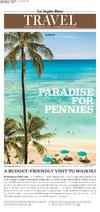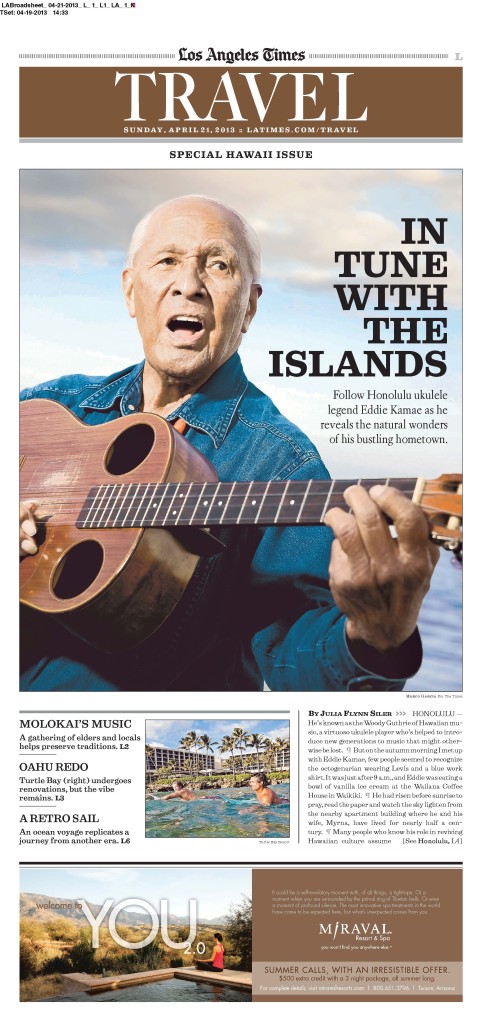
After living in Hawaii for sometime, its easy to forget about the beauty that surrounds us. The blue-green sea, the white (eroding) sandy beaches, the food, the weather, the mountains…I can go on and on describing wonderful Hawaii. So its always a challenge when clients ask for something slightly different for as an opening shot.
At any moment, somewhere somehow is snapping a picture, whether it is a family shot or professional shot, around Waikiki. It is one of the most photographed pieces of real estate in the world. There are thousands of professional pictures available on line and clients can easily pick a beautiful stock shot for pennies over a custom shot (uhhhh….for pennies—I digress!) Why hire when there is so much available? Because a custom shot gets you a unique, dare I say signature, vision from a professional photographer that no other client will have.
The Los Angeles Times asked me to shoot a full page image of Waikiki for their travel story illustrating a budget friendly vacation in Honolulu. The editor sent along few images taken by the writer and wanted me to capture a similar feel. My only parameters were to shoot from above, keep it vertical, and ensure I had a killer image at the end of the day. Jobs like this really get me fired up because no amount of money really accounts for all the time and effort it takes in finding a shot as such. But the outcome is completely worth the input. I couldn’t imagine doing anything else as the challenge of my craft is not work, it is just an extension of my life.
The pictures taken by the writer were photographed from one of the better hotel balconies on the beach. All the elements lined up and and made a pretty different view of Waikiki. Oddly enough it seemed the picture wasn’t from one of the budget hotels in the story so my challenge was not to present my image as such. The art direction was to capture Waikiki, not illustrate the story.
Fabulous views command big money and hotels rates are based on the amount of ocean and beach seen from the room. I could easily have called up one of the beach front hotels and asked to shoot from a room but hotels tend not to help you unless the story relates directly to them. I don’t have the budget to shoot from a rented hotel room and a helicopter view was not the perspective the client was after.
After living here for some time, I learned it is possible to enjoy Hawaii without blowing too much diñero and having a great time along with tourist who are taping out their credit cards. I also know how to find the big dollar views without having to shell out big money for hotel rooms or fancy restaurants. Sometimes just wandering around a big hotel looking like a tourist can help you gain access to views you might not be able to if you wandered in full camera regalia and reeked of the decisive moment. Looking like a clueless tourist with a Best Buy camera bag will keep housekeepers and bell hops off your tail.
So without revealing too many tricks of my clandestine trade, I got into a hotel, shot down at the beach and made a marvellous shot. I won’t reveal my location but a Waikiki sleuth might be able to pick it out based on what is in front of them. Needless to say, the Times editor Tears for Fears (I’m feeling overly cheeky tonight!) over the images as she had a large variety to choose. In an email after the article published, she stated “everyone LOVED the photos.”
That kind of praise makes the hours and time put in completely worth it. Again, it doesn’t take much to sea…err…see things from a different perspective. I just awaken my paradise slumber and look around.






